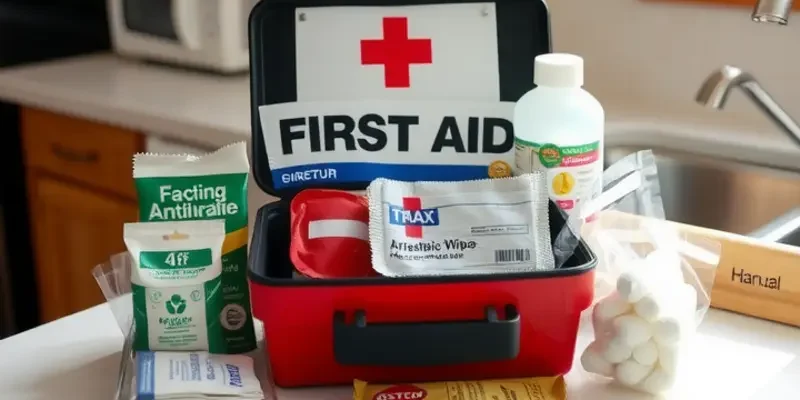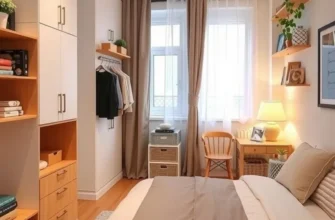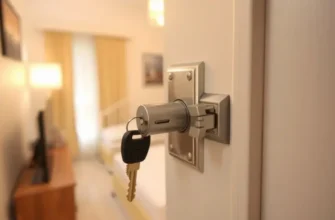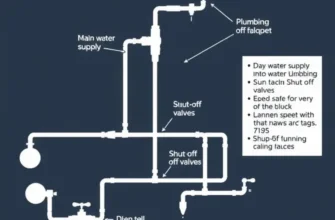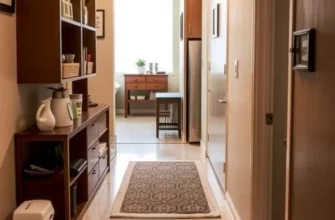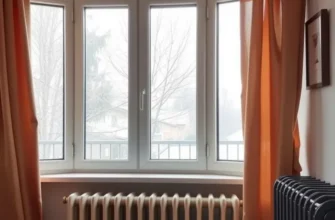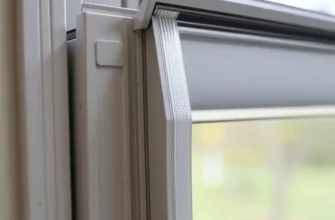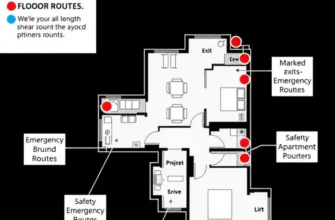Living in an apartment has its unique set of challenges, especially when it comes to safety and maintenance. As renters, it’s essential to prioritize your well-being and security, ensuring your living space is not only comfortable but also prepared for emergencies. A solid understanding of essential first aid protocols and basic safety measures can make a significant difference in how we respond to unexpected situations. Whether you are new to renting or have lived in an apartment for years, knowing what supplies to have and how to manage common household issues can lead to a more hassle-free living experience. In this guide, we’ll explore fundamental first aid supplies for every apartment, including emergency contact protocols, practical tips for common ailments, and the importance of having maintenance solutions in place. Let’s empower ourselves to create a safer home environment.
Emergency Preparedness: Essential First Aid Supplies
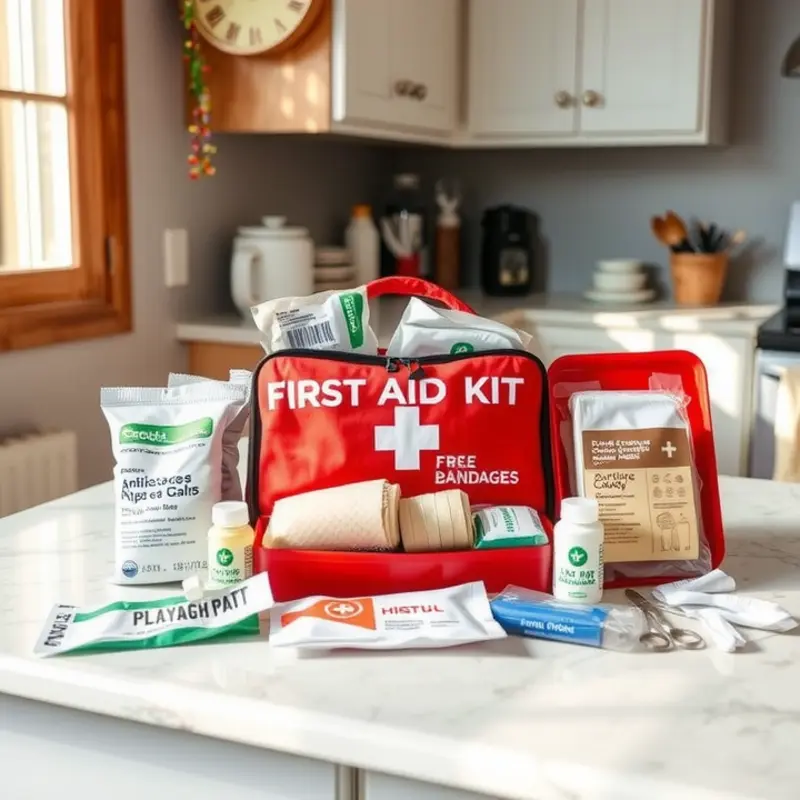
In any living environment, being prepared for minor injuries and ailments is key to maintaining safety and peace of mind. Apartment dwellers, in particular, should focus on a curated selection of first aid supplies that address a variety of possible scenarios in compact spaces.
Common injuries and ailments such as cuts, burns, sprains, or headaches can occur unexpectedly. Having the right supplies on hand helps ensure swift treatment and reduces the need for emergency calls or unnecessary trips to the doctor.
Let’s begin by identifying essential items for your first aid kit:
- Adhesive bandages: Useful for covering and protecting small cuts and blisters. Keep multiple sizes on hand.
- Sterile gauze pads and adhesive tape: Necessary for larger wounds or those that bleed more profusely. These allow for more custom coverage and better airflow than standard bandages.
- Antiseptic wipes and ointment: Critical for cleaning wounds before bandaging. These prevent infection, allowing for optimal healing.
- Tweezers: Handy for removing splinters or debris from a wound before applying antiseptic.
- A digital thermometer: Important for monitoring fevers, especially during flu season or pandemics.
- Pain relief medication: Over-the-counter options for headaches, muscle aches, and minor fevers are essential.
- Elastic bandages: Ideal for supporting sprains or joint injuries. They also provide compression as part of the “R.I.C.E.” (rest, ice, compression, elevation) treatment.
- Cold pack: An instant cold pack can reduce swelling from sprains and fresh bruises. No need to store in the freezer.
- Hydrocortisone cream: Effective for treating itching and irritation from insect bites or minor skin rashes.
- Scissors: Useful for cutting tape, gauze, or clothing if needed in an emergency.
Investing in a well-organized container is equally important, allowing you to easily access supplies during a crisis. A small, clear plastic box or a bag with compartments ensures that each item is in sight and within reach. Once the kit is assembled, place it in a central and secure location.
Routine checks on your first aid kit are necessary. Inspect all materials and restock any items that are running low or have expired. Building the habit of a bi-annual check will keep your preparations effective.
For apartment residents, managing space is crucial. Therefore, ensuring your first aid kit is concise yet comprehensive helps avoid clutter, aligning with broader strategies for managing apartment clutter.
By maintaining these essential first aid supplies, apartment dwellers can confidently manage minor emergencies, ensuring both personal safety and a backup when professional help is delayed. Always remember, while a first aid kit is a safety cornerstone, knowing when and how to escalate to professional medical help is equally vital.
Common Apartment Emergencies and Solutions
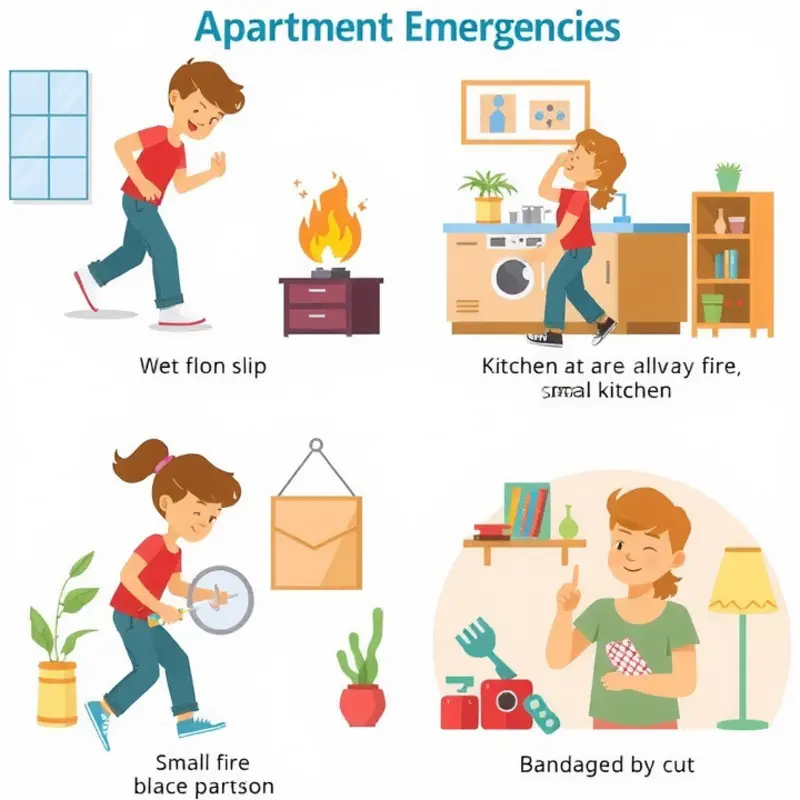
Living in an apartment comes with its share of emergencies, from minor injuries to maintenance issues. Understanding how to handle these situations efficiently is crucial. Being prepared can make all the difference when seconds count.
Common household emergencies like minor burns or cuts can happen in an instant. For a minor burn, immediately run cool water over the affected area for 10 to 20 minutes. Avoid applying ice, as this can damage the skin further. Once cooled, cover the burn loosely with a sterile, non-stick bandage and monitor for signs of infection. If you experience any severe symptoms, seek medical attention promptly.
In the case of a minor cut, cleaning the wound thoroughly is vital. Rinse the area with clean water to remove debris. Gently pat dry with a clean towel, then apply an antibiotic ointment and cover with a sterile bandage. If the cut doesn’t stop bleeding after ten minutes or shows signs of infection, consult a healthcare professional.
Slips and falls are common in apartments, particularly in kitchens and bathrooms where floors can become slippery. To manage a fall, check for injuries before attempting to move. If the person is injured, avoid moving them to prevent further harm and contact emergency services. In the case of minor bumps or bruises, apply ice packs to reduce swelling and elevate the injured area if possible.
Apart from personal injuries, renters often face maintenance issues that require immediate attention. For example, a burst pipe or severe leak needs quick action. Locate the main water valve in your apartment and turn it off to prevent flooding. Report the issue to management right away. Knowing where essential utility shutoffs are located is a proactive step towards minimizing damage.
For gas leaks, leave the apartment immediately to get to safety. Do not use electrical switches or spark-producing items on your way out. Once you are safely outside, contact the fire department and notify the building management team of the situation.
Another critical aspect renters face is pest infestations. A timely response and proper communication with your landlord or property manager are necessary. If you notice pests, report the issue immediately. Many leases include pest control responsibilities, so be sure to understand your rights and obligations in addressing such issues.
Understanding when and how to seek help is essential. Familiarize yourself with the emergency contact numbers for your building management. Keep these numbers accessible to ensure a swift response in urgent situations. Tackling these emergencies with an informed approach not only ensures safety but can also prevent issues from escalating.
Final words
Equipping your apartment with the right first aid essentials and knowing how to handle typical emergencies helps pave the way for a more secure and comfortable living experience. By acknowledging possible risks in your living environment and preparing adequately, you can act quickly and confidently in case of an emergency. Remember, safety begins at home, and that includes proactive measures in health, security, and maintenance. Together, let’s cultivate a space that isn’t just a place to reside but also a haven of peace and protection.

